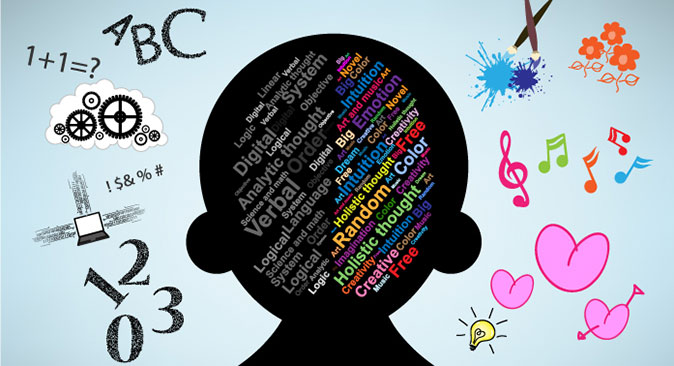Looking Inside the Brain of an Interpreter; Memory and Dual Modalities
by Ousia Whitaker-DeVault

There’s a vast array of scholarship that exists on the cognitive functions required for interpreting, so this week I’m delving into some really basic neuroscience, with the hopes that we can better understand some of the ways the brain goes about interpreting. With some of these insights, we may be better prepared to interpret effectively. This may be the first of a series of blog posts on related subjects.
To understand what is happening in an interpreter’s brain, one must consider memory, an integral component of the interpreter’s task. The notable Russian psychologist Ivan Sechenov said that memory processing is “the force upon which all psychological development is based,” yet there is so much about that exquisite and delicate muscle that we do not entirely understand.
Linguists and neuroscientists have learned that memory processing is a dynamic activity, not merely a reproductive one. For simultaneous interpreting, that means that the brain is working in more than one modality at once (both perception and production). Narly Golestani, the group leader of the University of Geneva’s Brain and Language Lab, says that during interpretation, “the brain regions involved go to an extremely high level, beyond language” (Watts).
Because of the dual modalities involved in interpreting, the interpreter’s caudate, the region of the brain that coordinates tasks (we could call it the brain’s project manager) is kept busy. Many of “our most sophisticated abilities are made possible […] by lightning-fast coordination between areas that control more general tasks, such as movement and hearing. Simultaneous interpretation, it seems, is yet another feat made possible by our networked brains” (Watts).
With consecutive interpretation, the same amount of cognitive work is done as in simultaneous, but it occurs over a longer period of time. Consecutive interpretation is preferred in community settings both because it is a more natural means of communicating, and because interpreting consecutively diminishes fatigue from dual auditory input.
All interpreters manage a wide array of cognitive tasks while processing information relayed in the source language. “In addition to producing and comprehending speech, successful [simultaneous interpretation] depends heavily on verbal working memory, simultaneous speech perception and production, and switching of attention between languages and between input and output modalities” (Moser-Mercer).
Many studies have shown that interpretation quality drastically decreases over time when continuously interpreting, because of the high level of performance required of these brain functions. This deterioration of quality is exacerbated when other environmental, physical, or psychological stresses are introduced.
To limit the negative consequences of fatigue on the brain while interpreting, it is important that interpreters take breaks, know their limitations, and be well-rested when on assignment. If scheduled for an eight hour shift, take advantage of your breaks to move around, eat a healthy meal, and relax. Try to avoid unnecessary physical and emotional stresses, and remember to thank your brain for the incredible work that you do!
Works Cited
Moser-Mercer, B. “Simultaneous interpreting: Cognitive potential and limitations.” INTERPRETING 5(2): 83-94. 2000
Watts, Geoff. “In Other Words: Inside the Lives and Minds of Real-time Translators”, Mosaic. 18 Nov. 2014.






